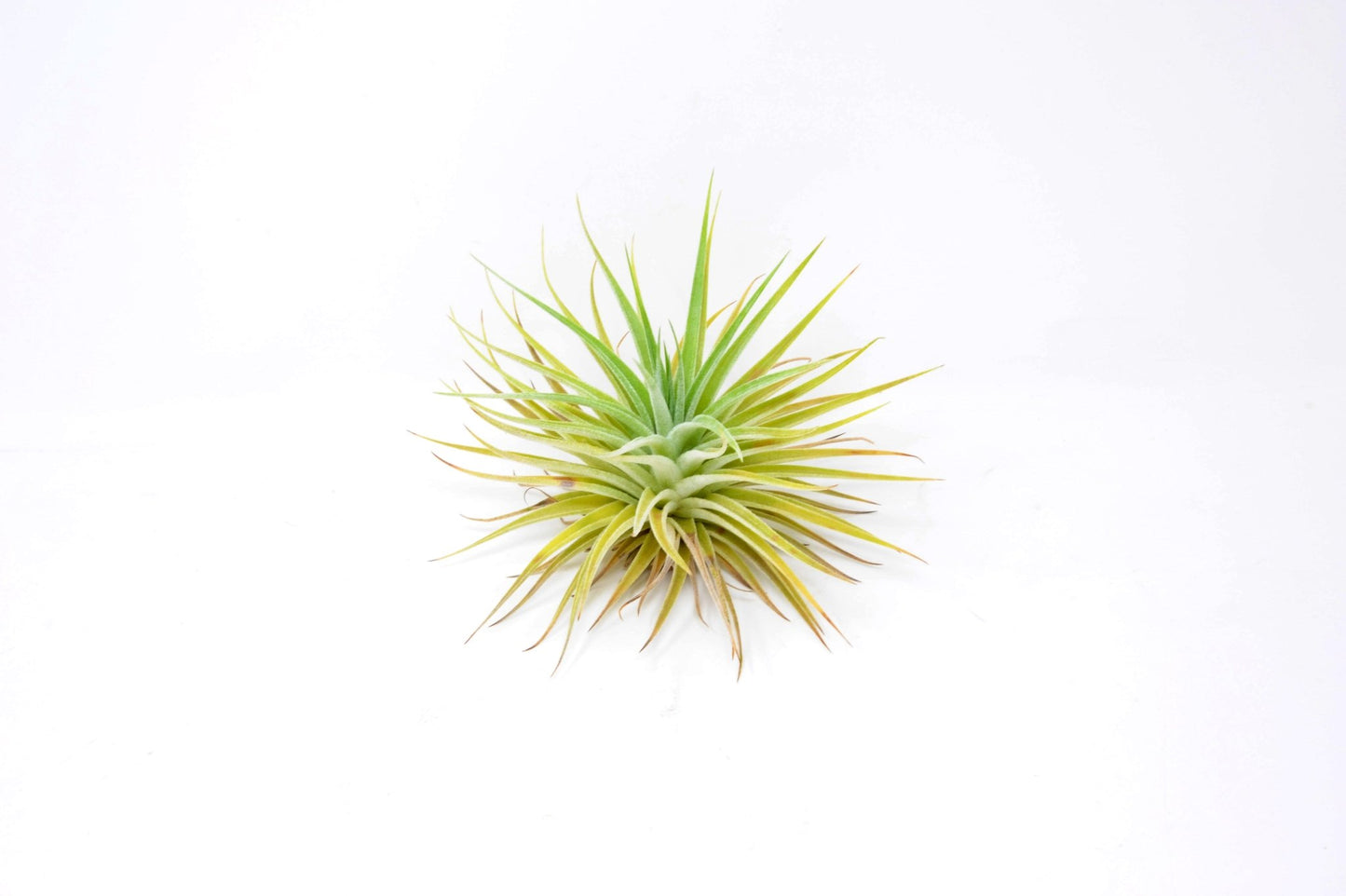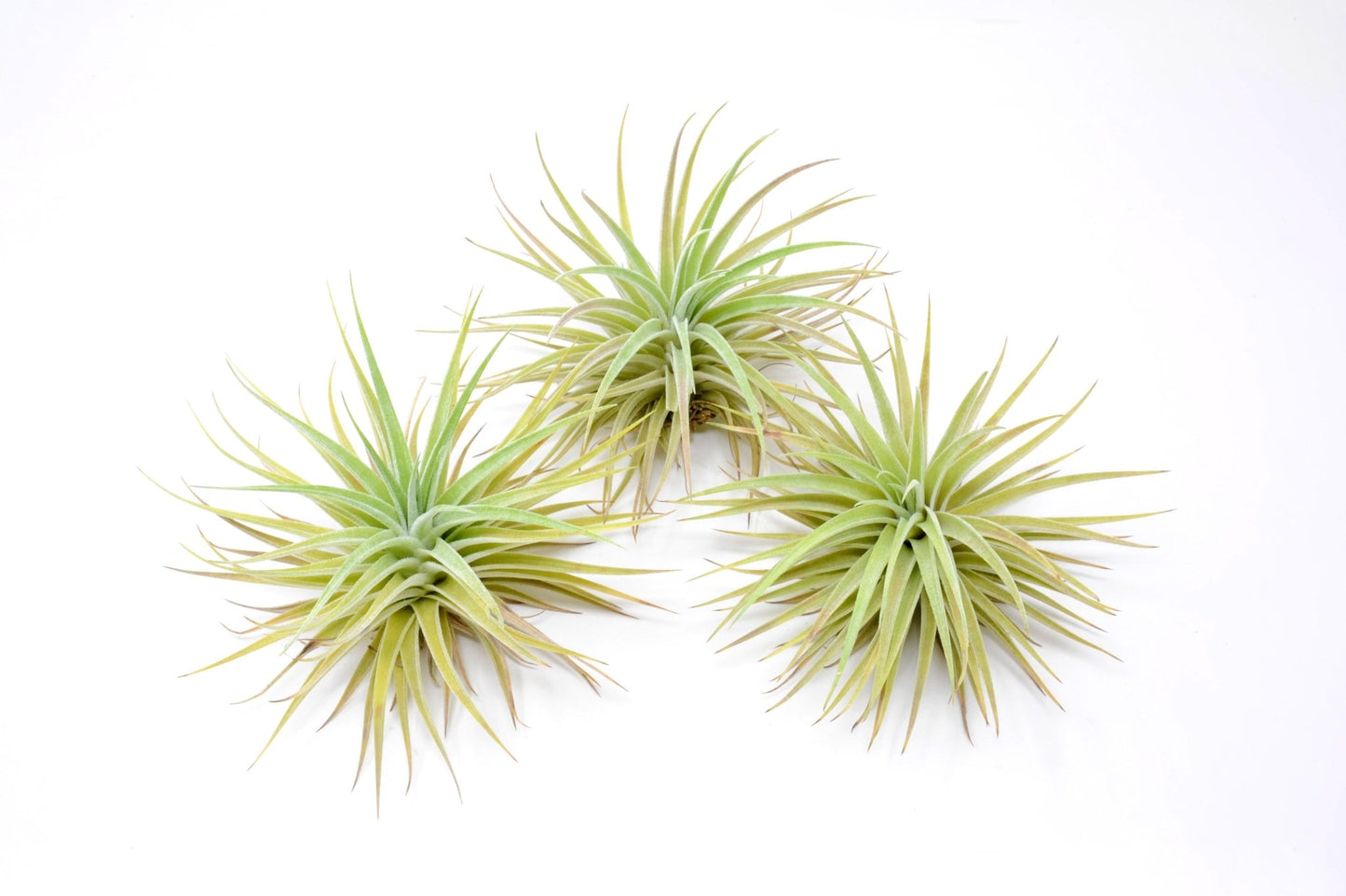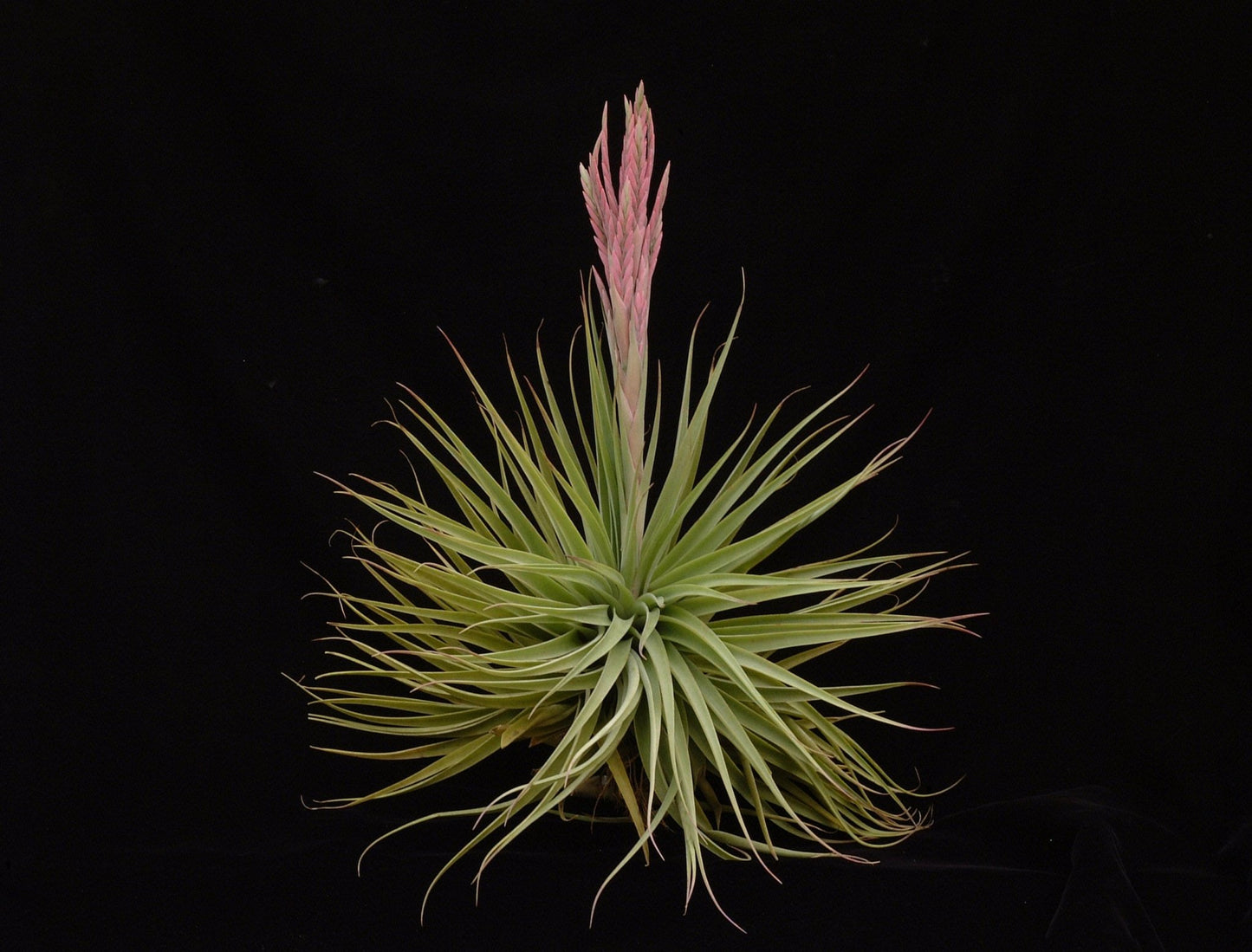Bromeliaceae
Tillandsia didisticha
Tillandsia didisticha
Couldn't load pickup availability
Share
Named by J.G. Baker in 1888, Tillandsia didisticha belongs to the subgenus Anoplophytum. Its name refers to the unique arrangement of its bloom spikes, which are twice distichous - arranged in parallel ranks opposite each other along the rachis of each bloom spike.
Key features:
- Epiphytic species found in woods across Peru, Bolivia, Paraguay, and Argentina
- Grows at altitudes from 500-1,500 meters
- Produces one of the most beautiful inflorescences in the Tillandsia genus
- Adapts well to cultivation, rewarding attentive growers with stunning displays
The image showcases T. didisticha's striking form - a dense rosette of narrow, triangular leaves that radiate outward in a symmetrical pattern. The leaves appear silvery-green due to a covering of subappressed, cinereous trichomes. This adaptive feature gives the plant its distinctive, slightly frosted appearance.
Collector's note: T. didisticha is renowned for its spectacular inflorescence - large, pyramidal, colorful, and long-lasting. The scape and floral bracts are a mesmerizing ruby red, frosted with trichomes, creating a striking contrast with the pure white corollas. This visual drama makes it one of the most stunning plants in the genus.
Care tips: While easy to grow, this species requires good air circulation and consistent watering. It's more cold-sensitive than many Tillandsias, so protect it from frost. Patience is key - plants grown from seed may take up to 20 years to bloom, but the wait is well worth it.
Ideal for:
- Collectors seeking a visually dramatic Tillandsia
- Botanical gardens showcasing diverse epiphytic adaptations
- Patient growers willing to nurture a plant for its spectacular blooming potential
- Enthusiasts of unique floral arrangements in bromeliads
Display recommendation: Mount on a piece of weathered wood or in a hanging glass globe to showcase its symmetrical form and to provide the good air circulation it craves. When in bloom, place it where the contrast between the ruby bracts and white flowers can be fully appreciated.
Embrace the allure of T. didisticha—a living testament to nature's artistic flair, where patience is rewarded with one of the most breathtaking displays in the Tillandsia world. Its unique twice-distichous bloom arrangement is a botanical marvel that sets it apart in any collection.






